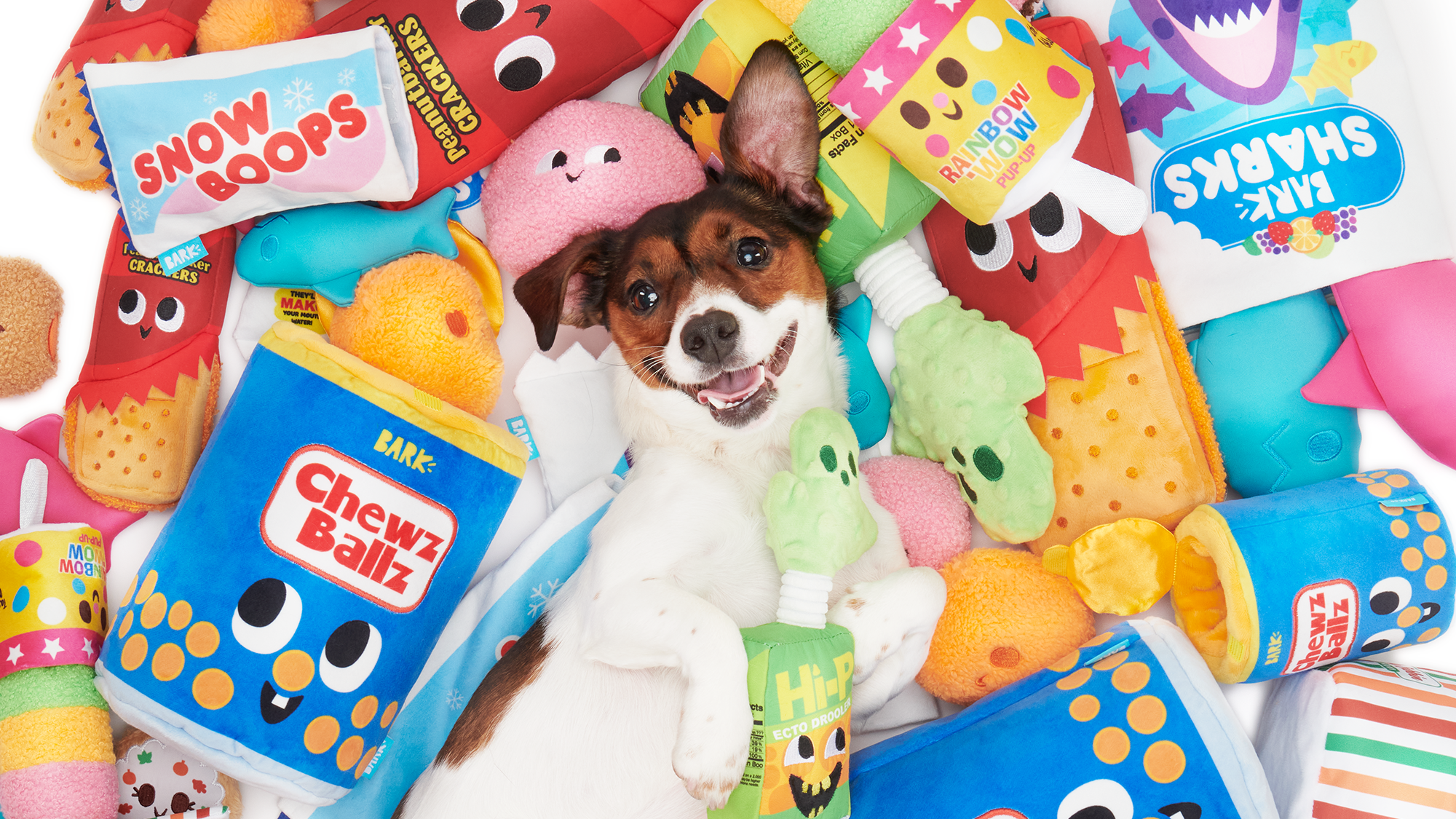A bluffer’s guide to horse colors
How many horse colors do you know? Some have misleading names – don’t be caught out!
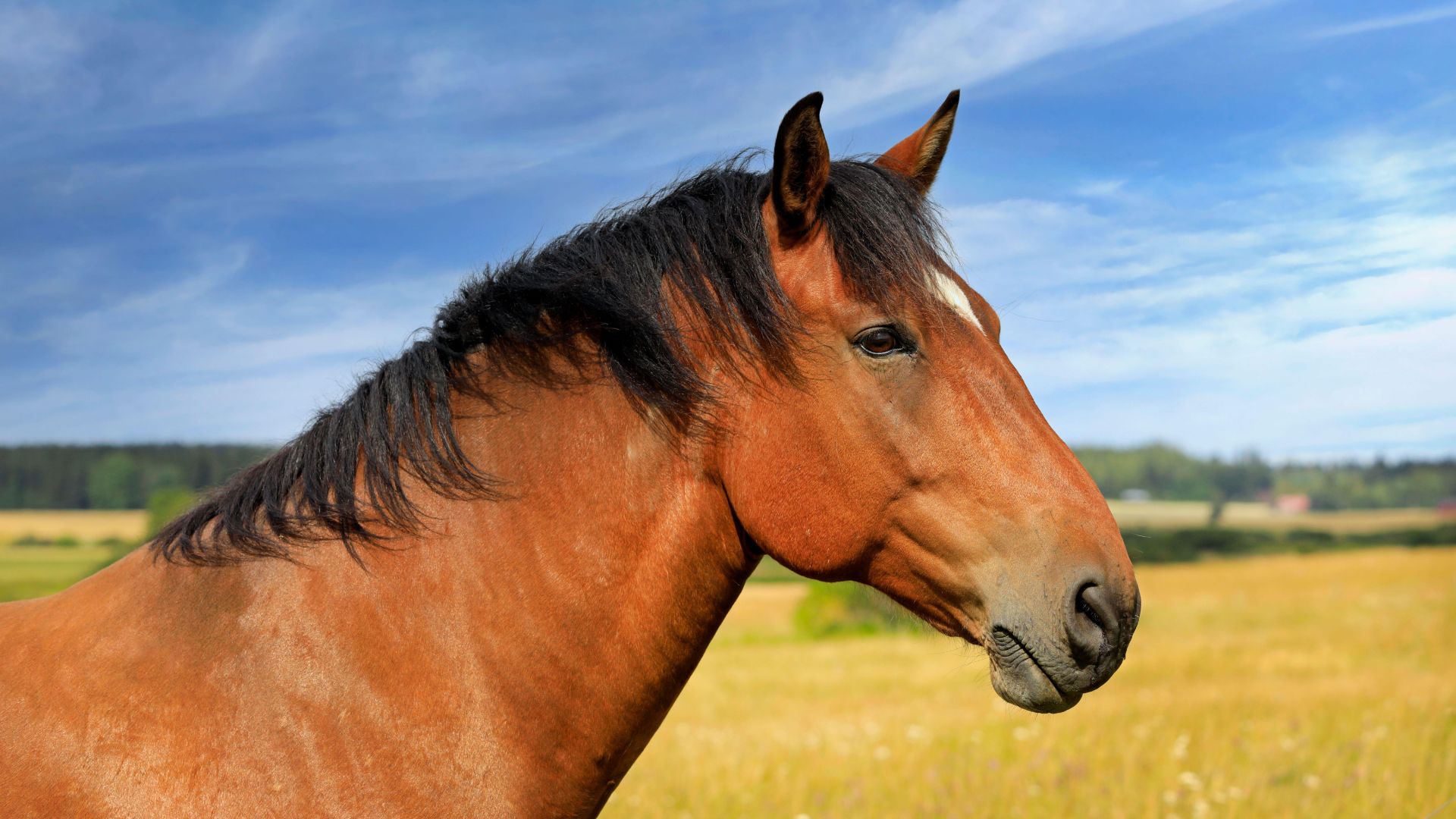
There’s pretty much no limit to the horse colors you’ll see in the equine world, as well as huge variety of coat patterns that make endless combinations possible.
Equine coat color is determined by genetics. In very simple terms, two base coat pigments result in a chestnut coat (a reddish brown color) and black. These two colours commonly interact to produce another base color, a dark brown known as bay. The variation we see in horse colors is caused by additional genes, which modify and enhance the coat color.
If you’ve ever wondered how to identify horse colors, here’s our helpful guide to the many different variations in the equine world.
Solid horse colors
Black
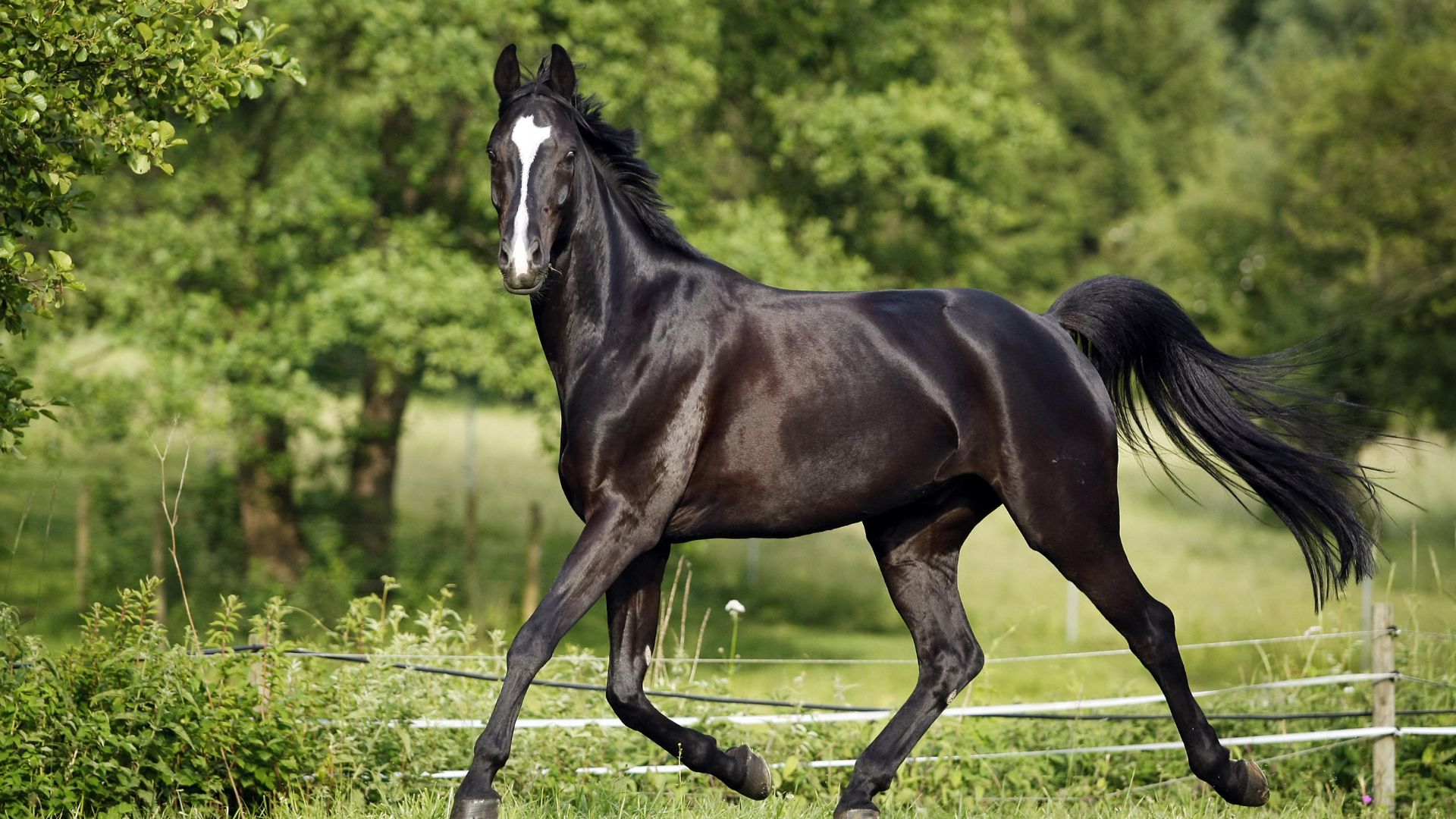
This one is pretty straightforward. While different genes interact with the black pigment to create other colors and patterns, there aren’t any named variations of this color as there are with other coats.
Black horses can have white markings on their legs and faces, but generally nowhere else. They have black manes and tails, but can have white or striped hooves.
Chestnut
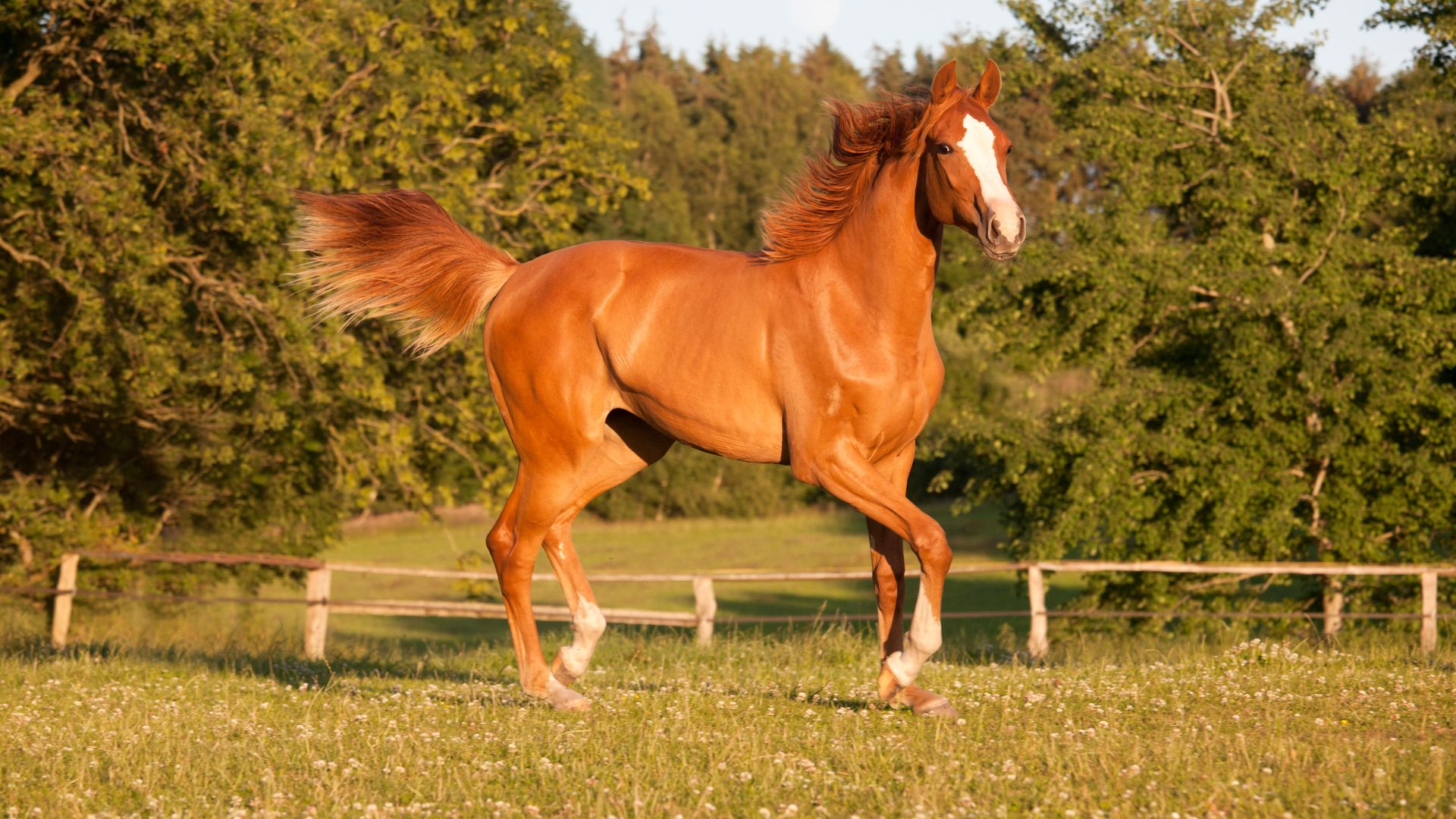
Liver chestnut: very dark red
Flaxen chestnut: any shade of chestnut with a light mane and tail
Chestnut horses can also be called sorrel. They have a reddish brown coat in various shades and can have white leg and facial markings.
Bay
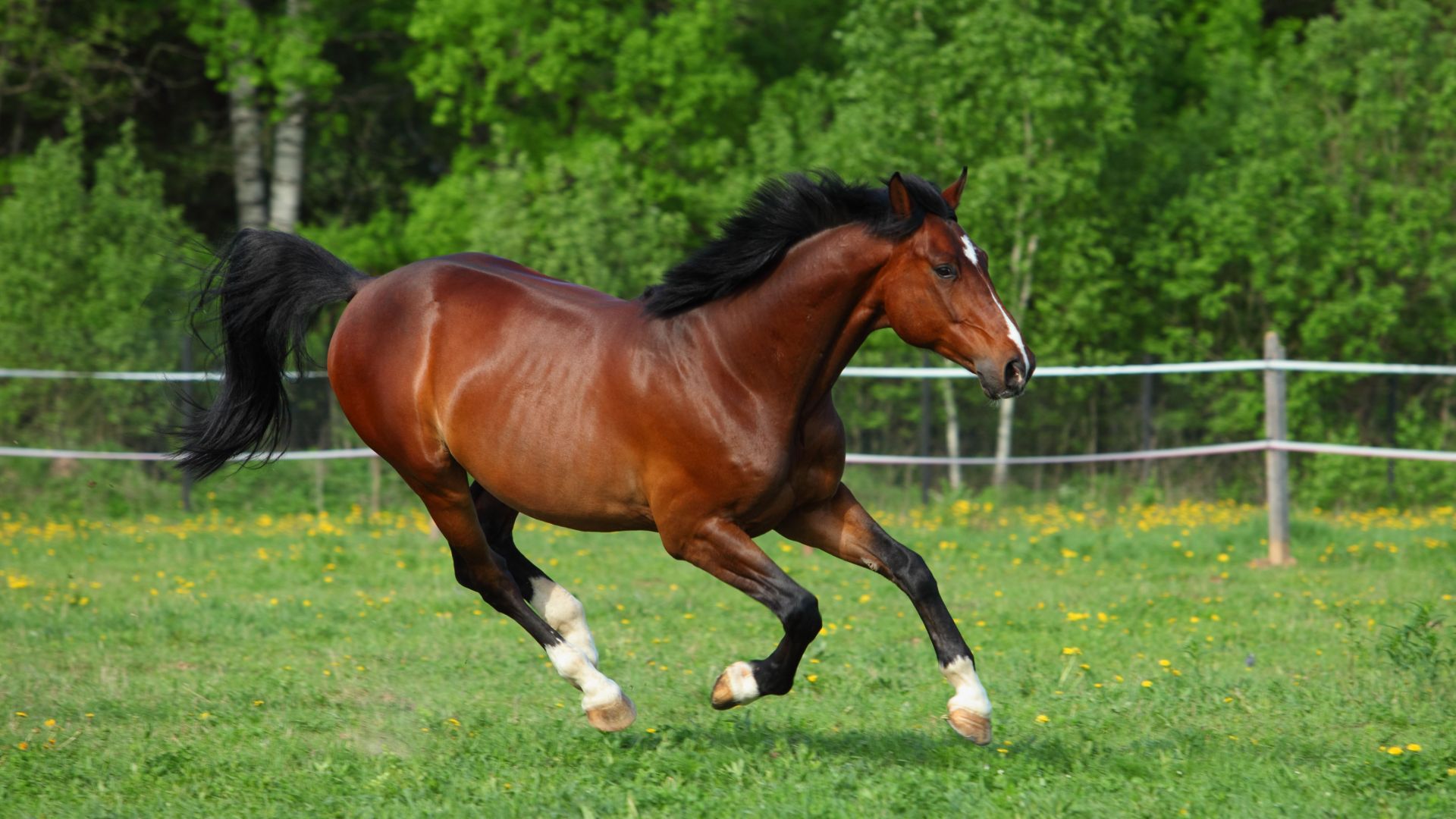
Dark bay: very dark brown or chocolate brown
Blood or red bay: bright red
The bay equine coat color is similar to chestnut, but bays have black points, meaning black markings on their legs and black manes and tails. They can also have white face and leg markings.
Get the best advice, tips and top tech for your beloved Pets
Gray
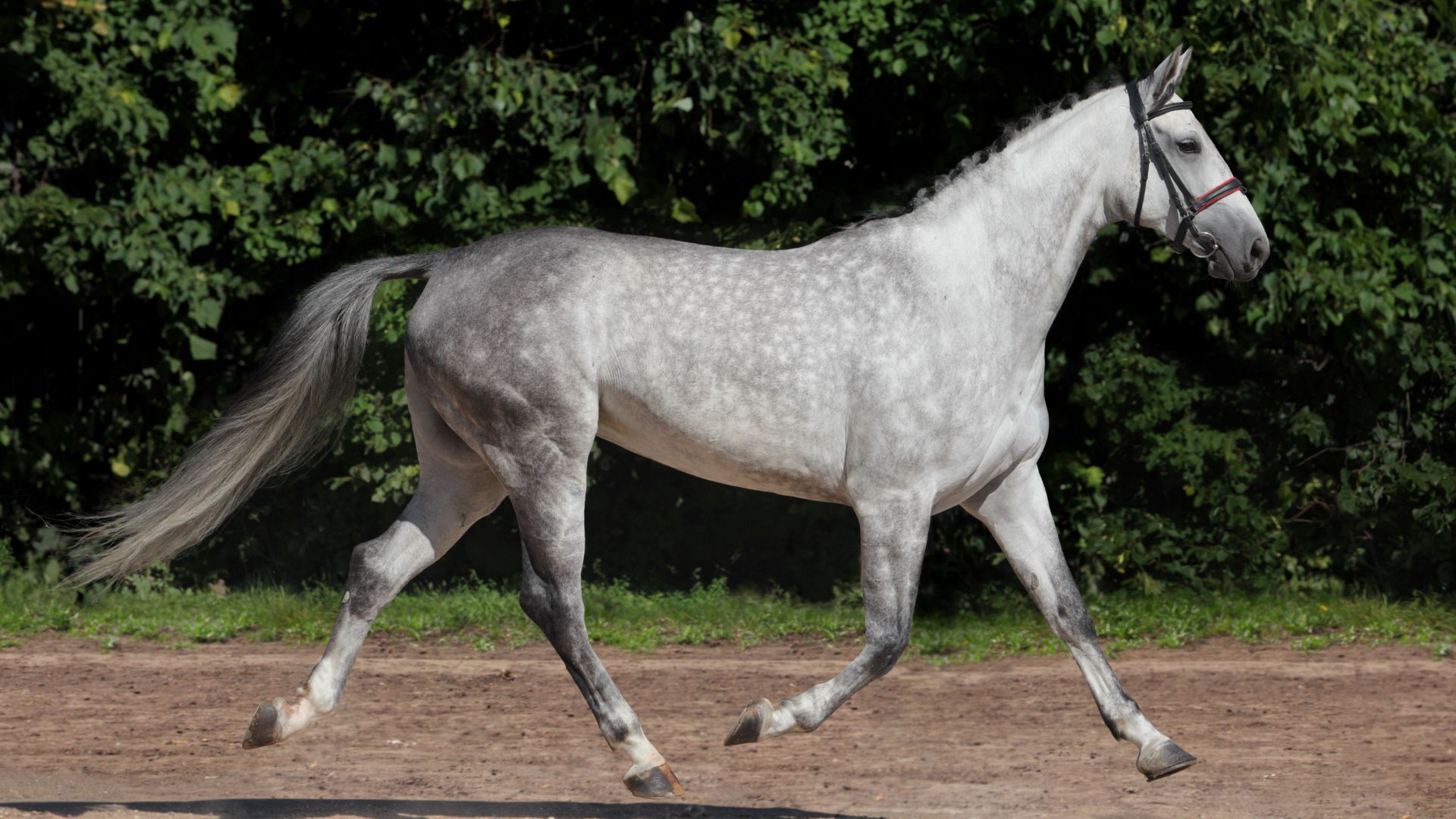
Dapple gray: gray with lighter circular patterns, called dapples,
Iron/steel gray: a dark gray color
Fleabitten gray: a gray with dark gray flecks through the coat
Rose gray: a gray with a reddish pink or brown quality to the coat
Often, grays look white. There is such a thing as a truly white horse, but this is rare.
Grays might have darker gray legs, ears and dark skin on the muzzle.
Buckskin
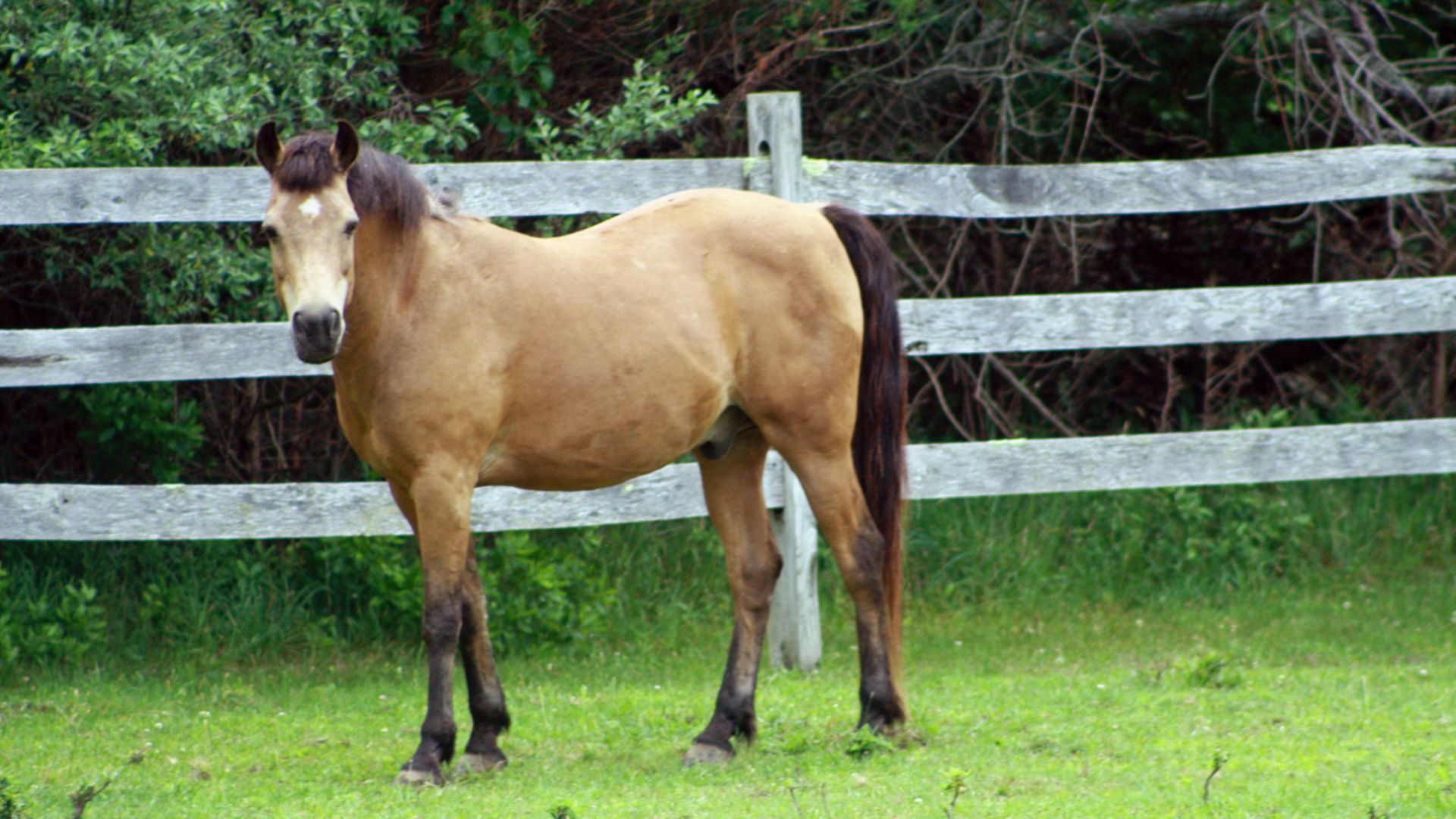
Buckskins have a coat that varies in color from pale cream to a yellowy cream, gold or even as dark as chocolate with a mane and tail usually significantly darker than the coat color, often black. Buckskins can have black or dark points and white leg and face markings.
Palamino
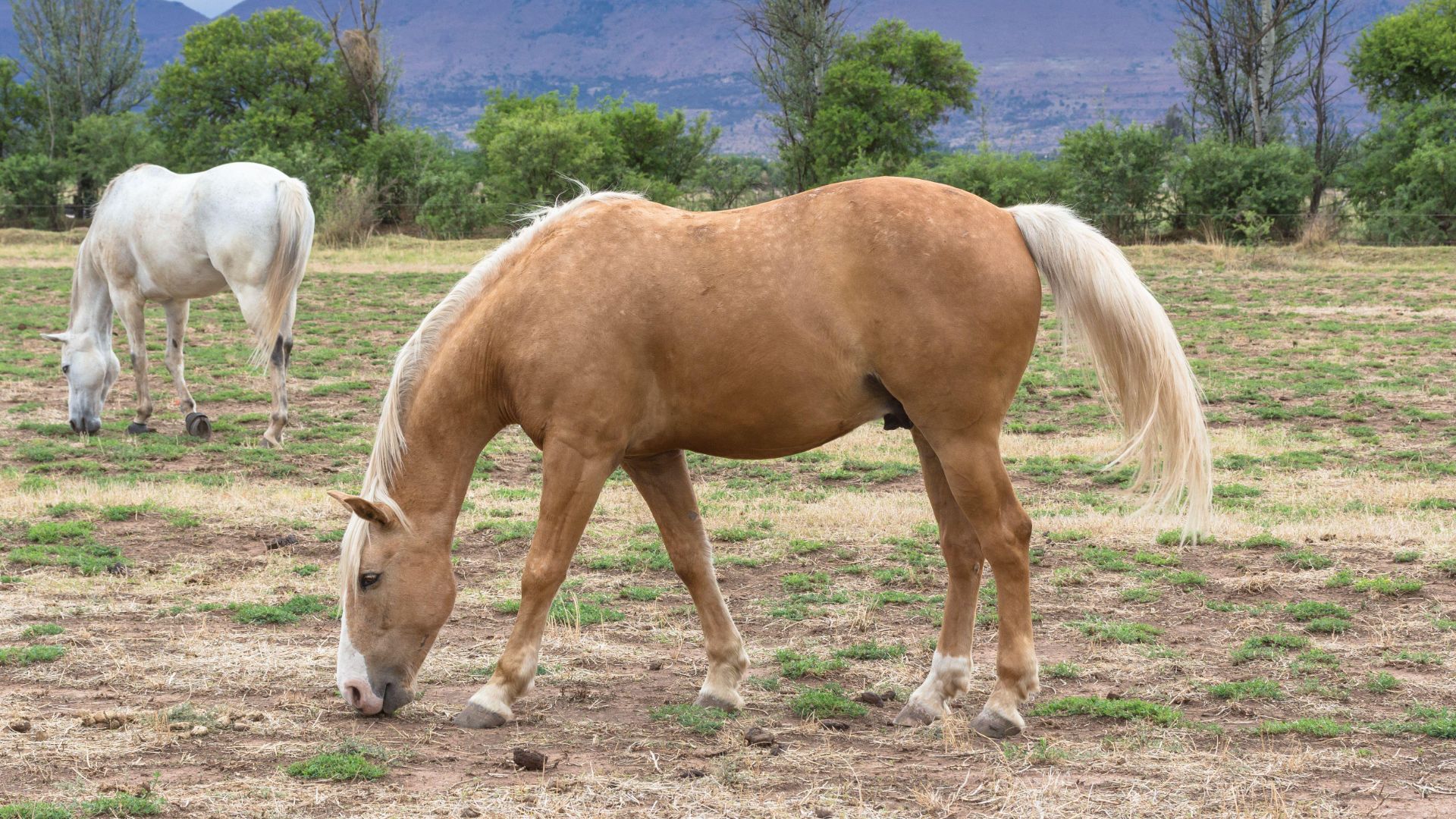
Palaminos often have the look of Barbie’s dream horse! Like buckskins, their coats can be pale cream to golden, a reddish cream or even a deeper chocolate (a sooty palamino), but their manes and tails are always paler, or flaxen. They can have white markings on their face and legs.
Cremello
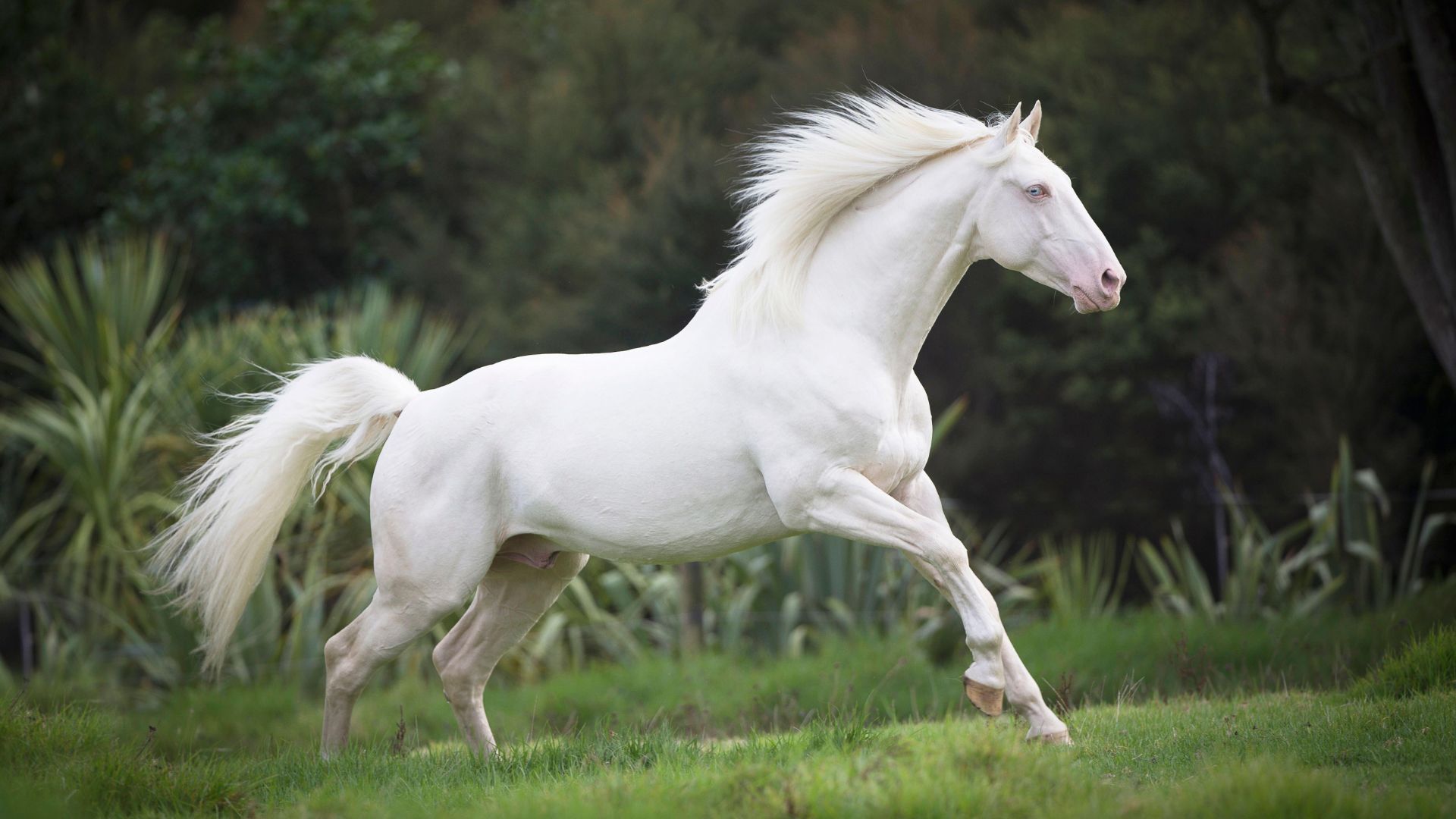
Cremellos have an all-over creamy coat. They have pink skin, which can make them susceptible to sunburn, and frequently have blue eyes. A cremello will not have any black points.
Perlino
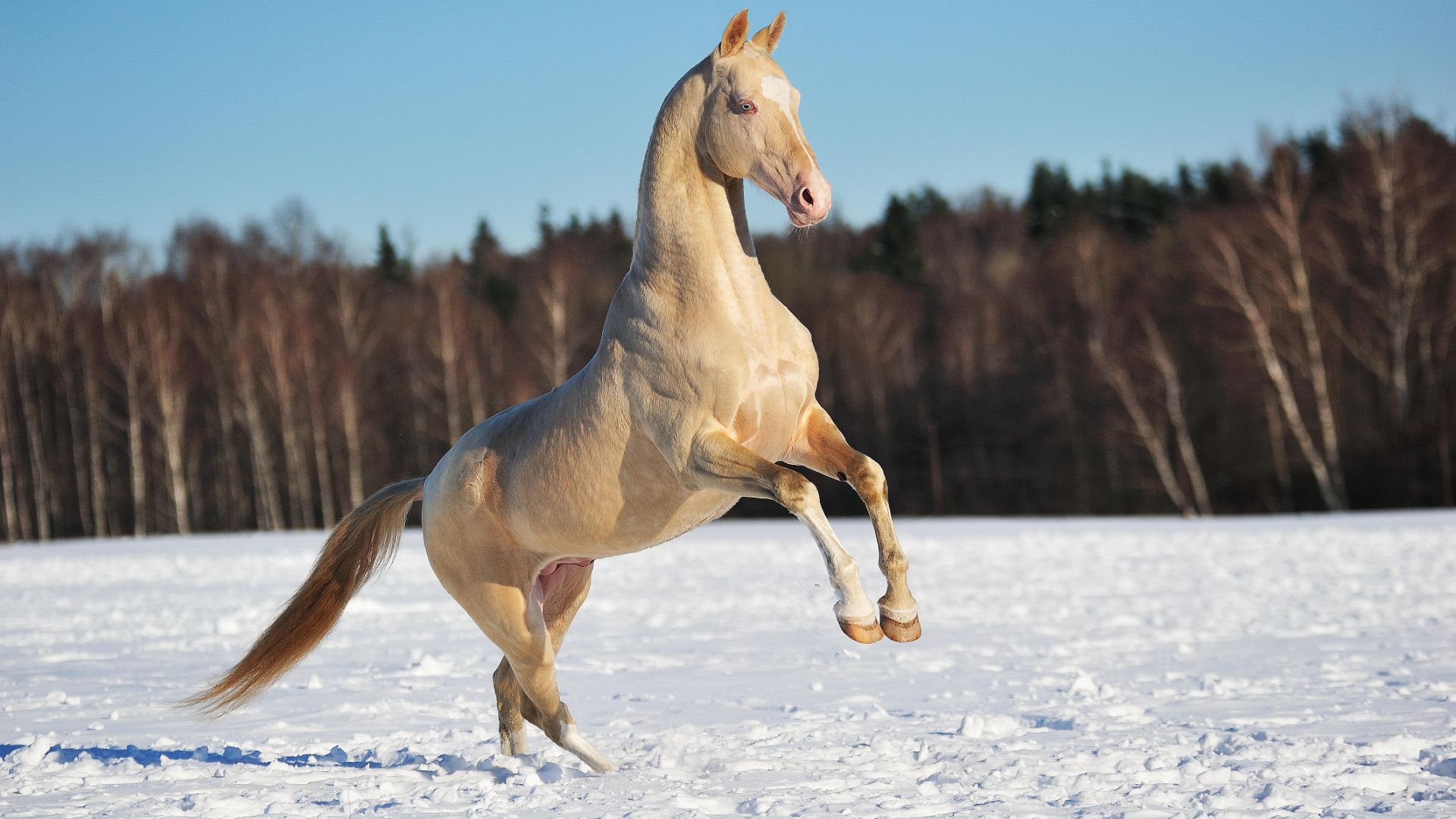
A perlino has a similar look to the cremello, also with pink skin and commonly blue eyes. However, they have a reddish tinge to the mane and tail, sometimes the coat too.
Dun horse colors
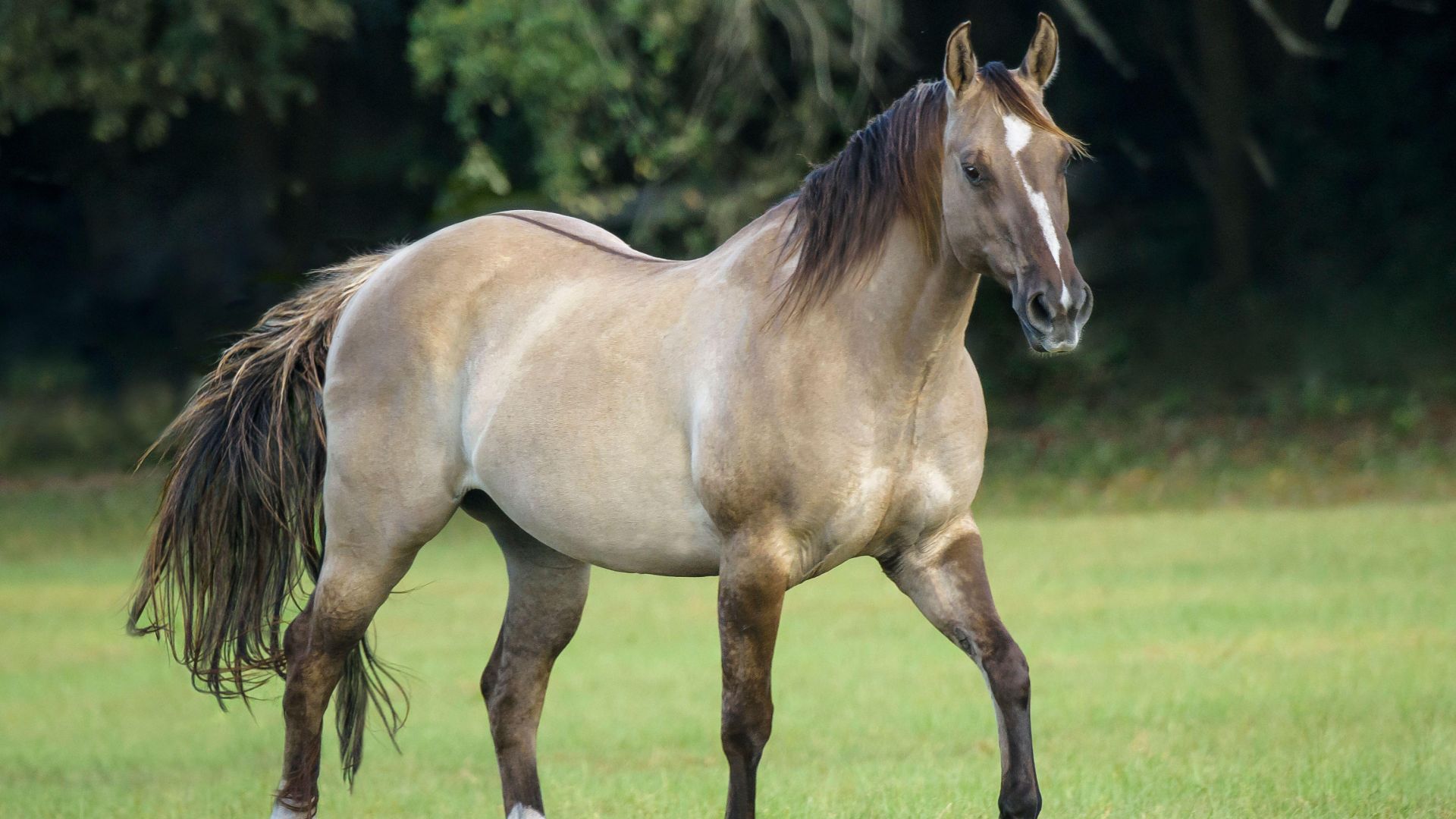
Duns are frequently confused with buckskin due to their similar coat colors. However, duns have a little extra something special – primitive markings called dun factors. These include a dorsal stripe (a dark line running along the spine to the top of the tail, or dock), a darker colored mane and tail and sometimes horizontal stripes on the legs that look like zebra stripes.
Here’s a detailed look at some dun variations...
Blue dun (Grulla)
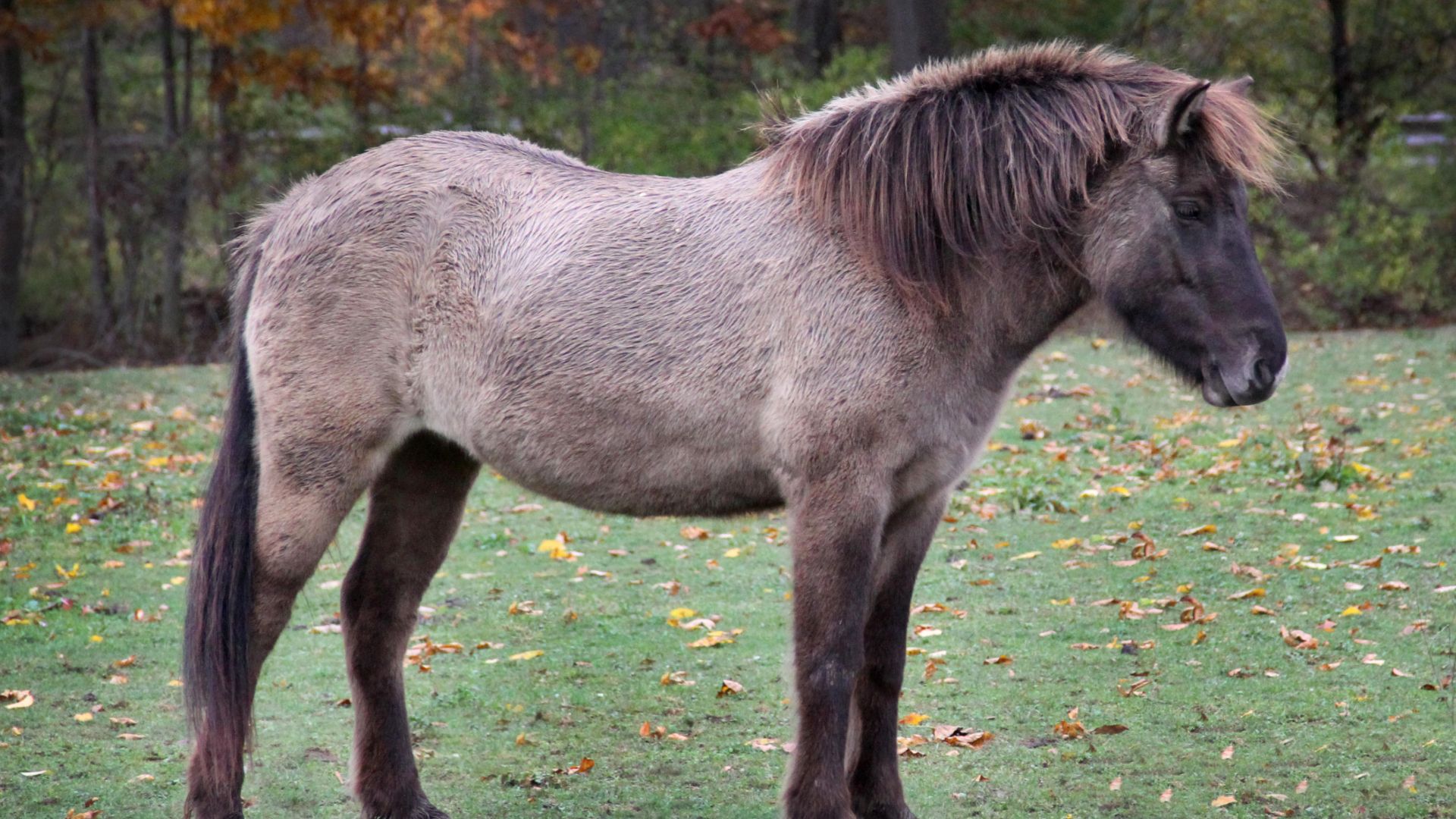
A mouse coloured gray or silver color with dun factors.
Red dun

Pale yellow or tan coat with a chestnut hue and dun factor markings.
Spotted horse colors
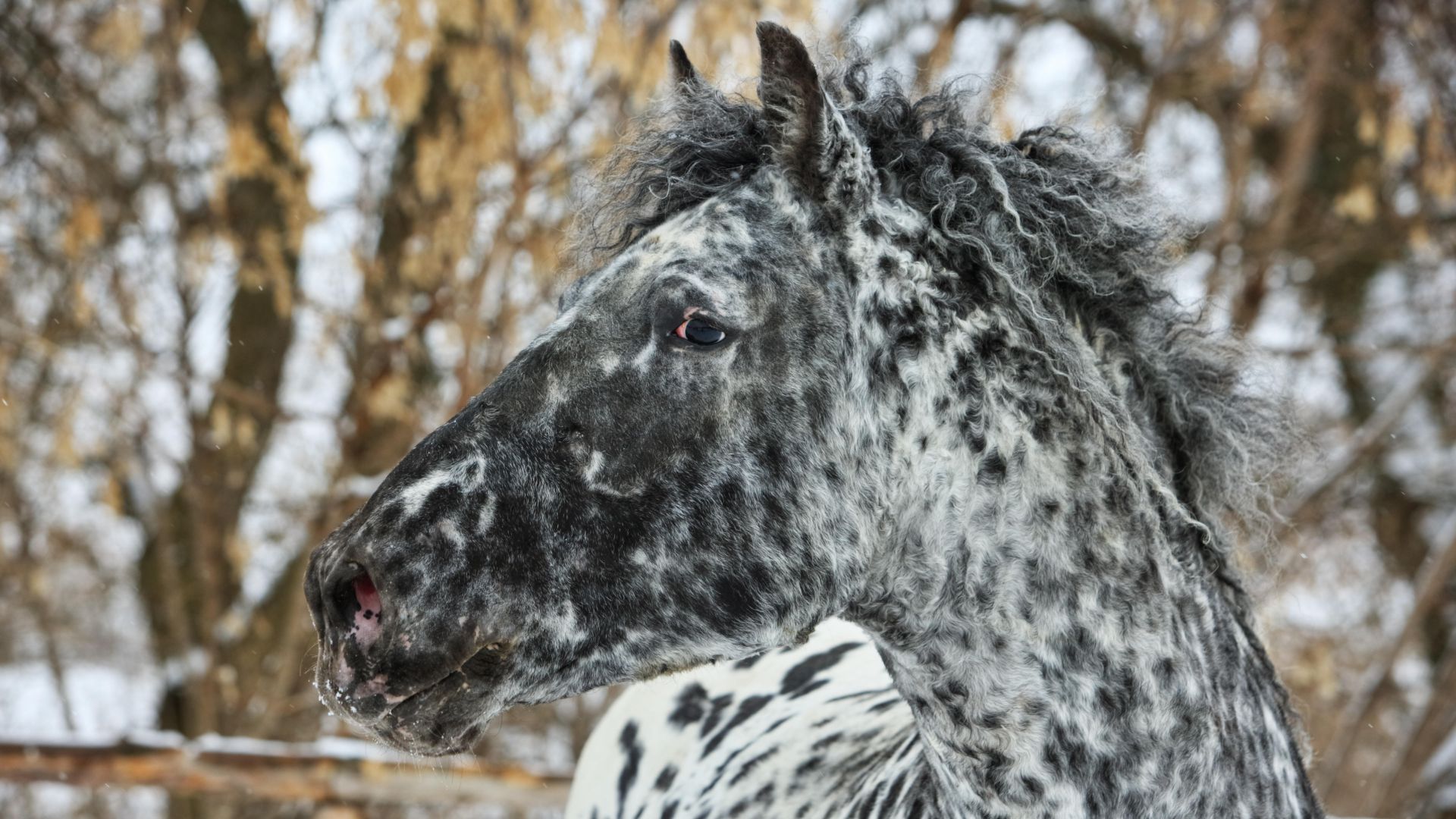
Several horse breeds have spotted coats, such as Appaloosa, Knabstrupper or the British Spotted Pony. Spotted coat patterns come in a number of variations, which include...
Leopard spot

A white base with spots of various sizes and colors covering the body.
Few spot leopard
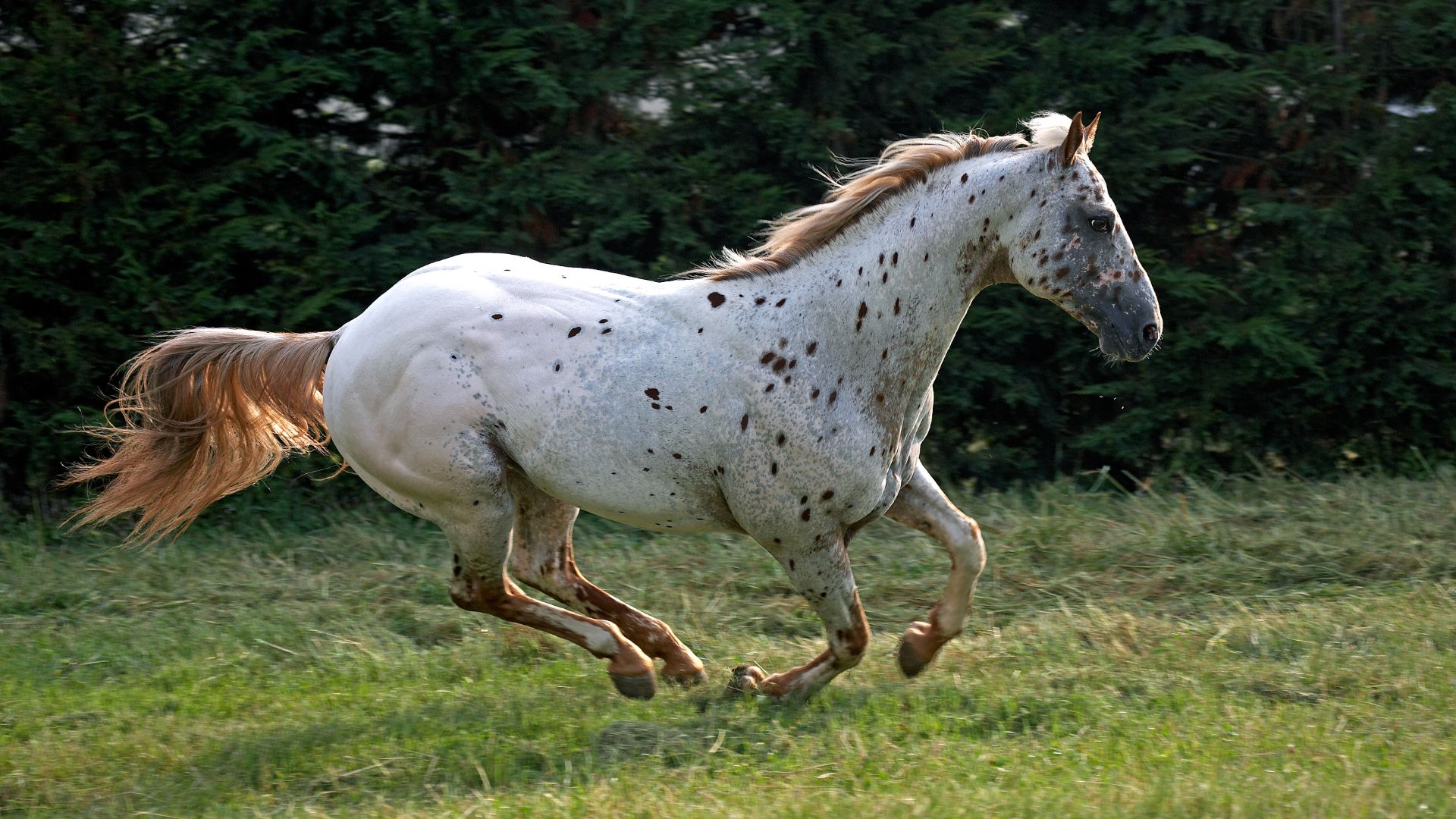
A white body, sometimes with dark points and sparse spotting, usually concentrated on the face, legs, ‘armpits’, neck and chest.
Blanket spot
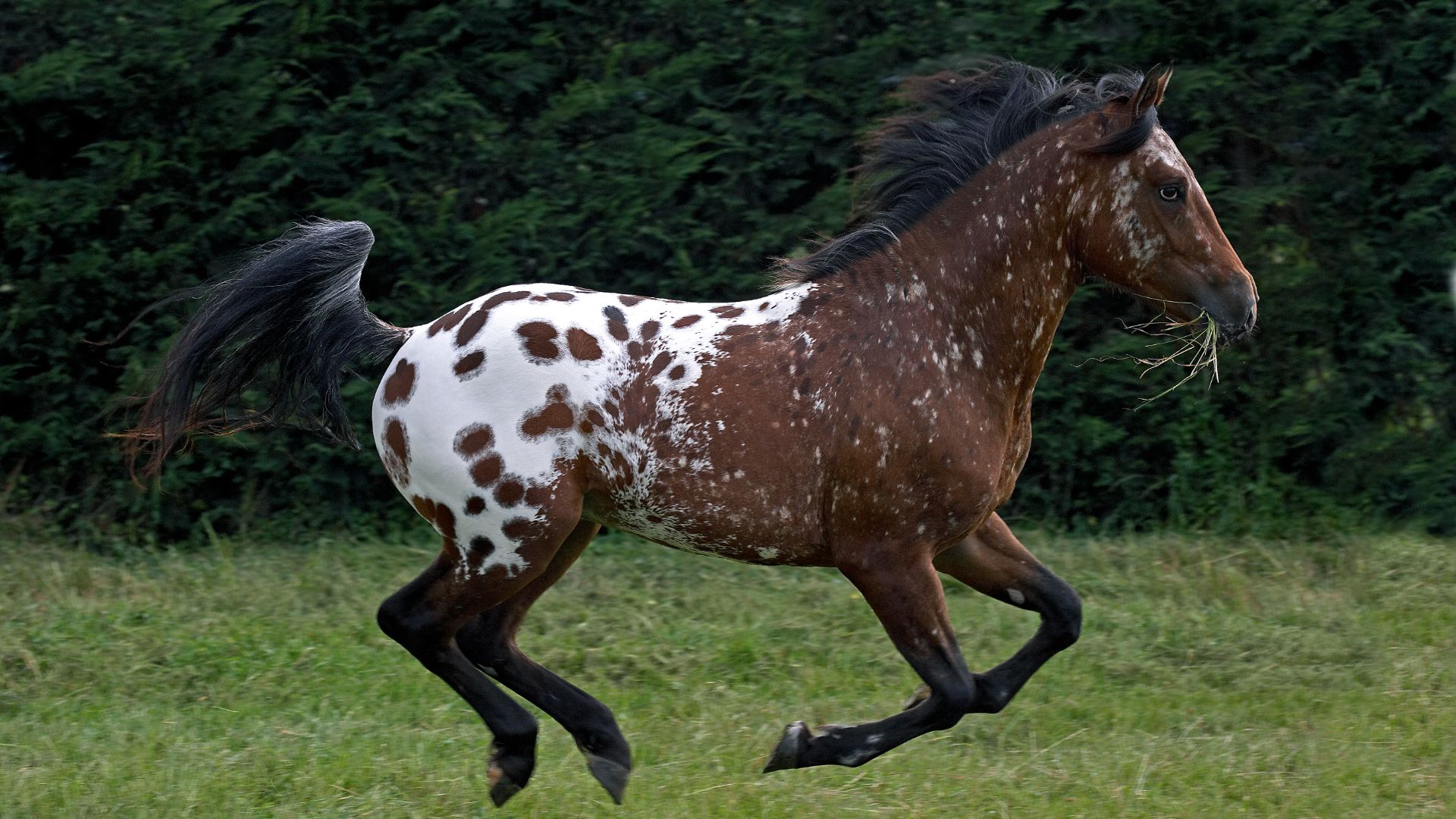
A dark base coat and a ‘blanket’ of white over the usually the hindquarters, but can extend over the whole back. The blanket feature spots of the same color as the base coat.
Snowflake
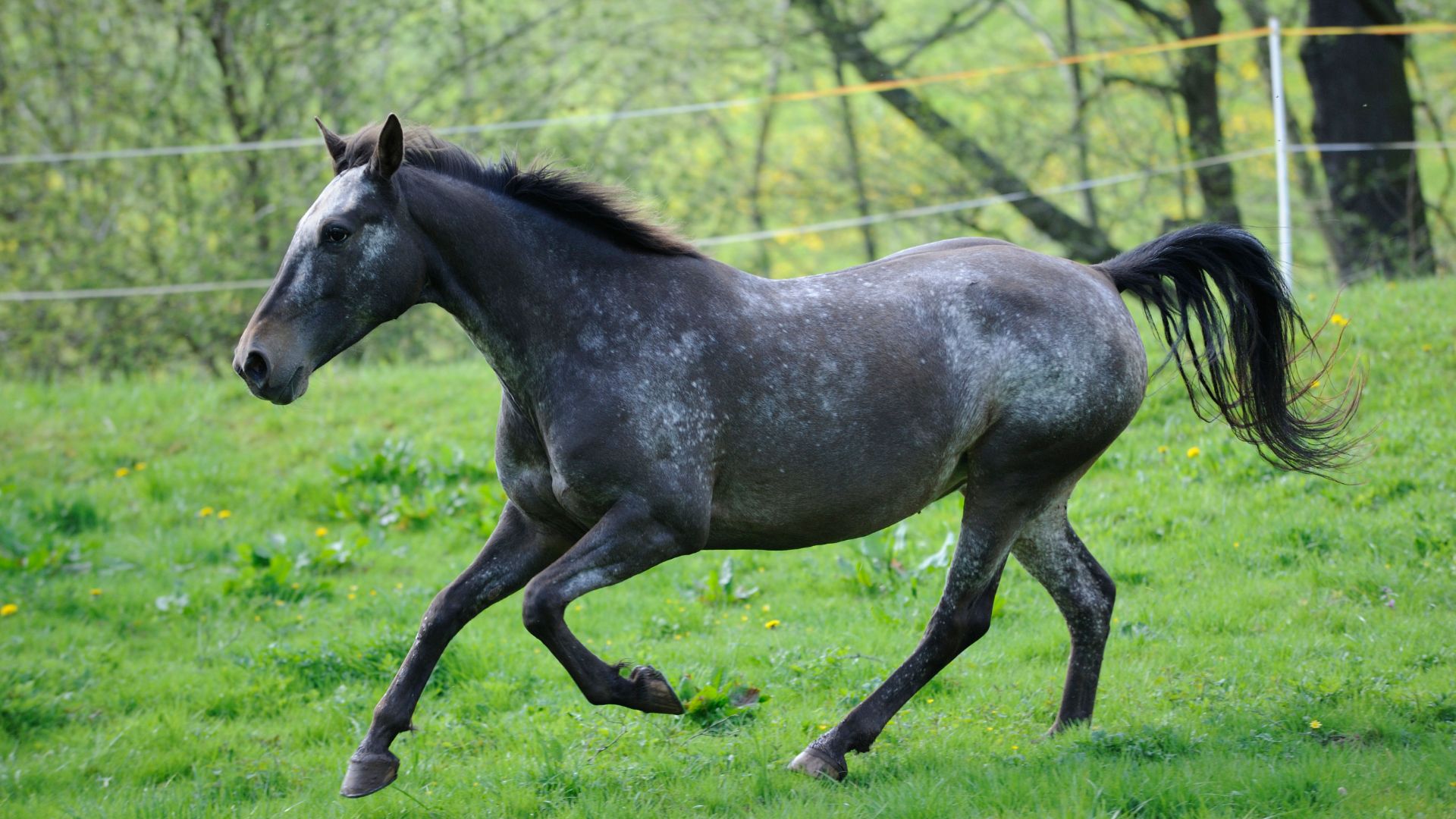
White spots over a dark body.
Pinto/Paint horse colors

Pinto or paint horses have large patches of white over any underlying coat color. There are several pattern variations...
Tobiano
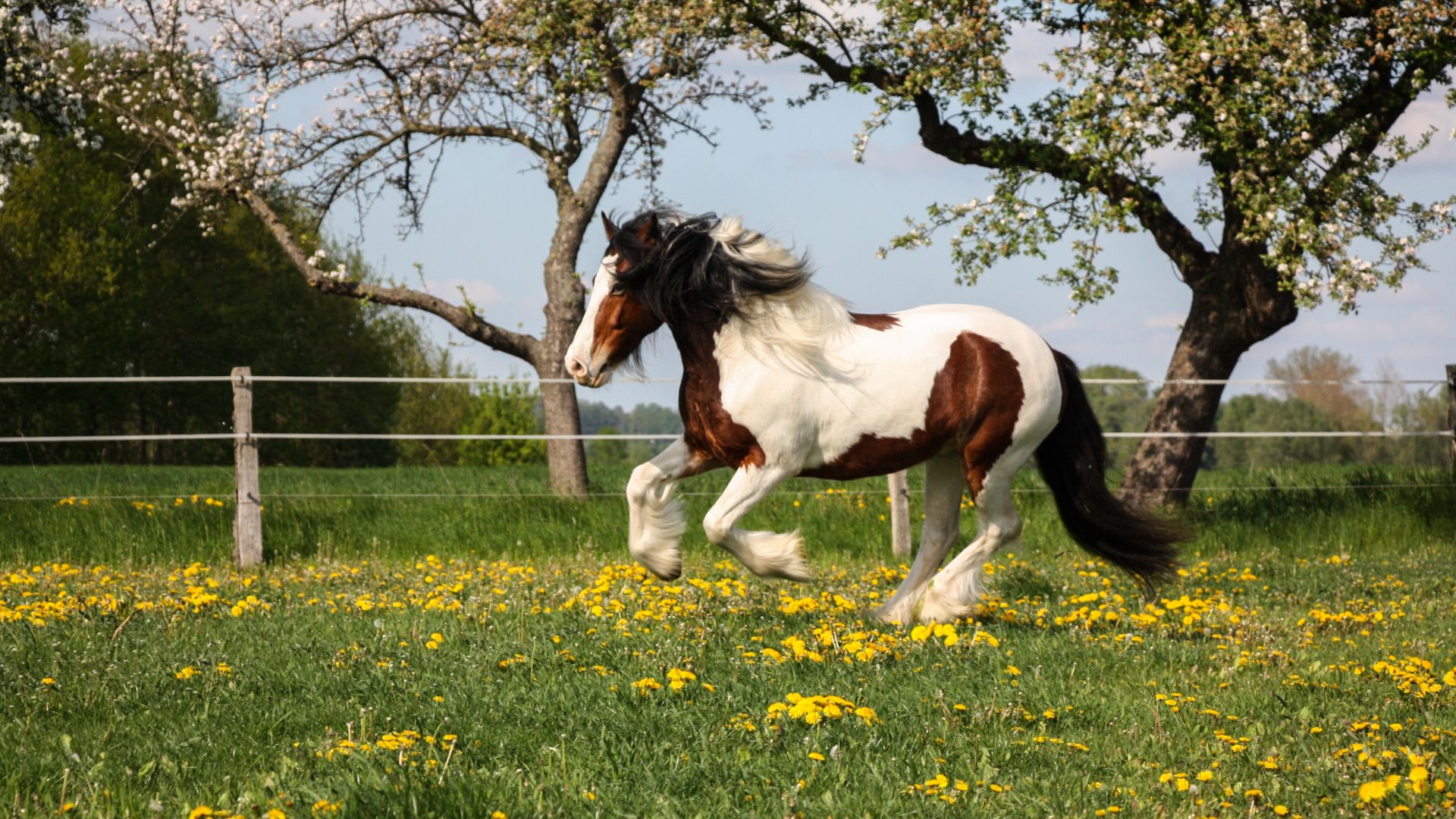
A tobiano commonly has a solid head color (though he may have white facial markings), white legs and a white zone across the back between the withers (base of neck) and dock. The markings are generally rounded in shape.
Overo (frame)
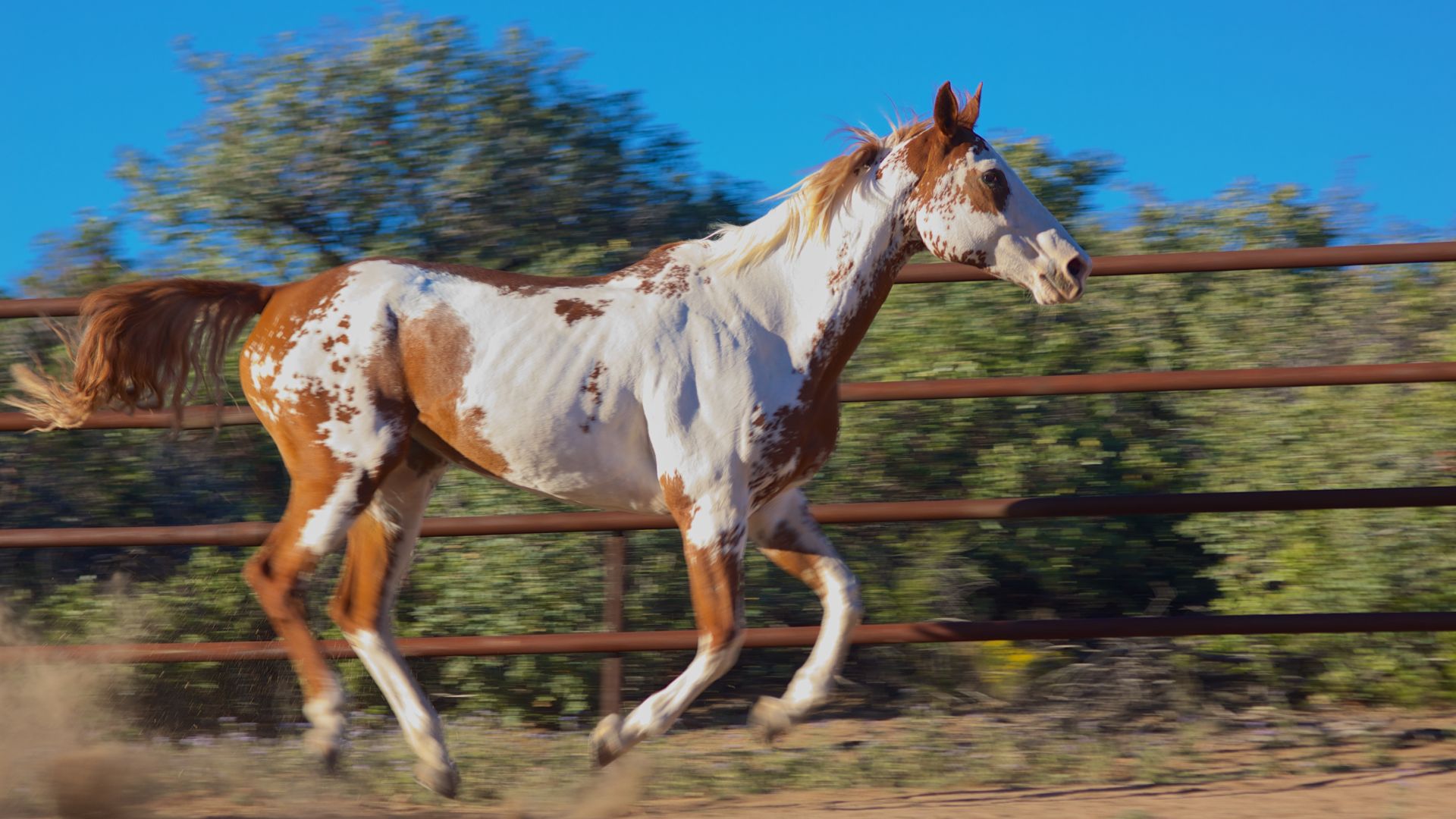
The overo pattern is also known as frame. A white face and patches with sharp edges in a horizontal pattern characterize overo, and sometimes the markings can be subtle, so the horse is not instantly recognizable as a pinto. Overos can have blue eyes.
Sabino
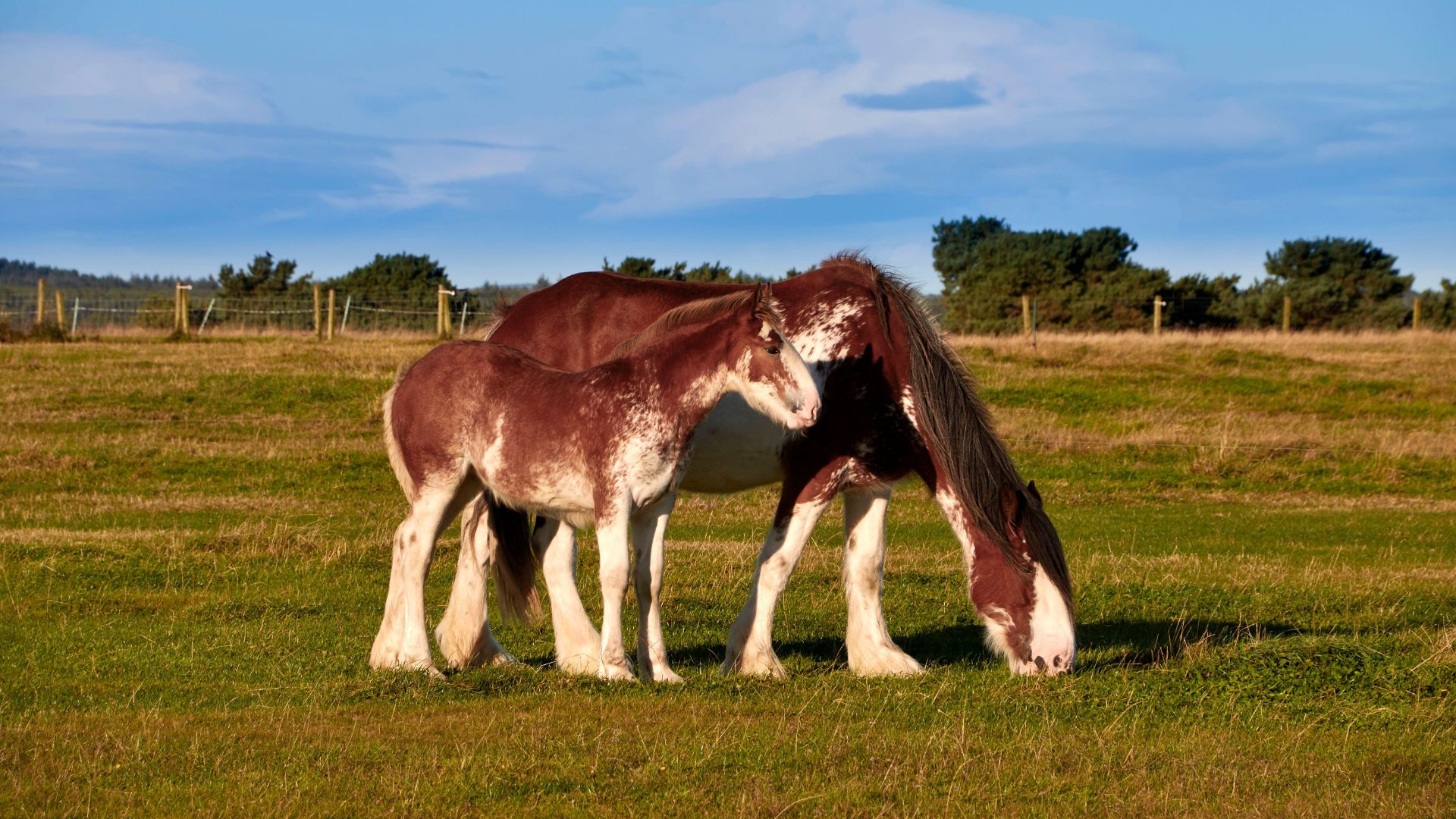
Sometimes called a sabino roan, this pattern features white stockings and white splashes higher up the leg, belly and flanks. The edges of the markings can look blurred into the darker equine coat color. This pattern is often seen in Clydesdales.
Splash white

The rarest pinto color, splashed whites look as if they are a solid color horse dipped in white pain. They often have white faces and white stockings, but the white can extend high up the body.
Roan horse colors
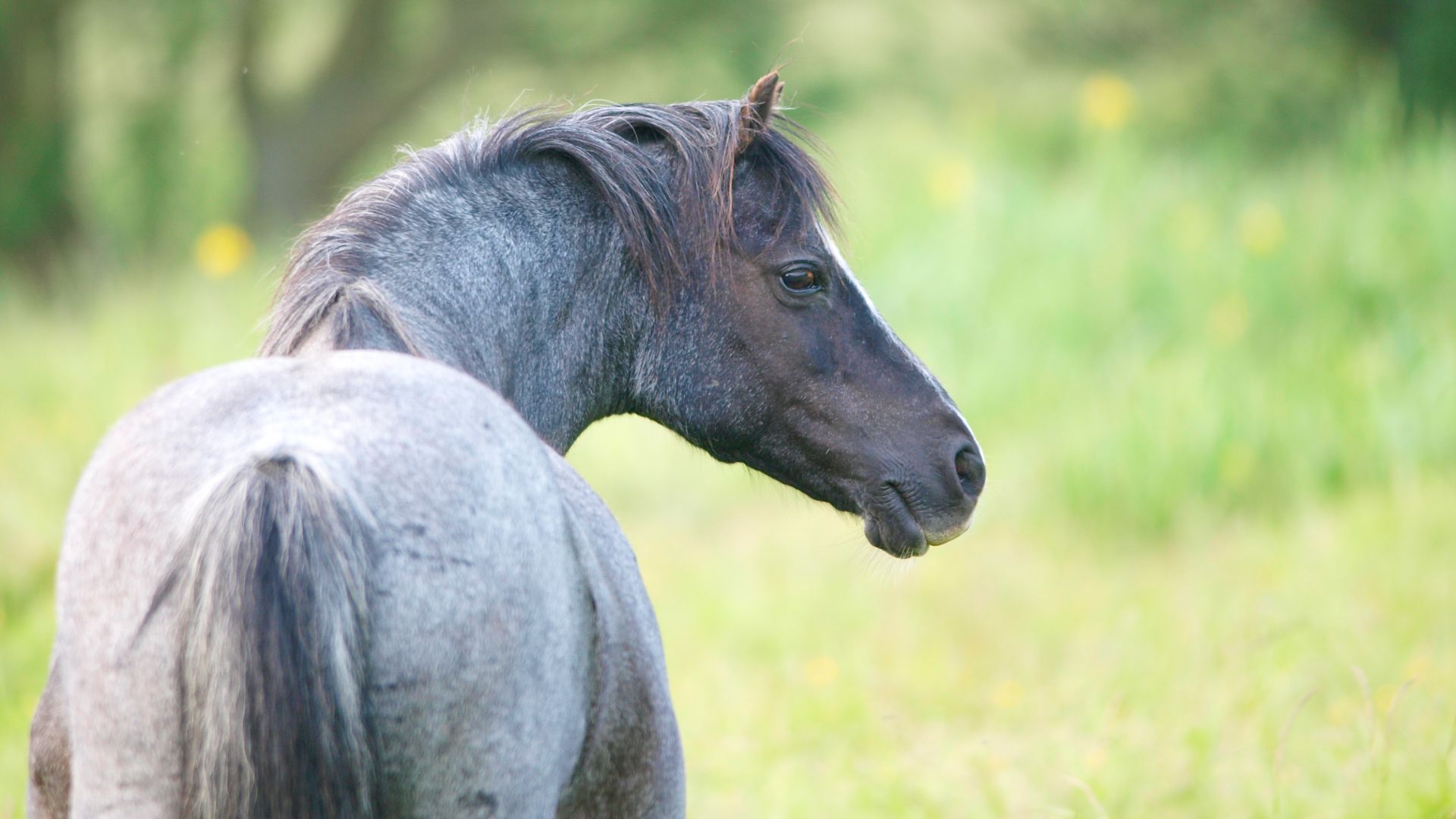
A roan has white hairs intermixed into their darker color, which does not lighten with age as is often seen in grays. There may be color variation between a roan horse’s summer and winter coats. They can have either a solid-colored or much darker head.
Variations of roan include...
Red roan
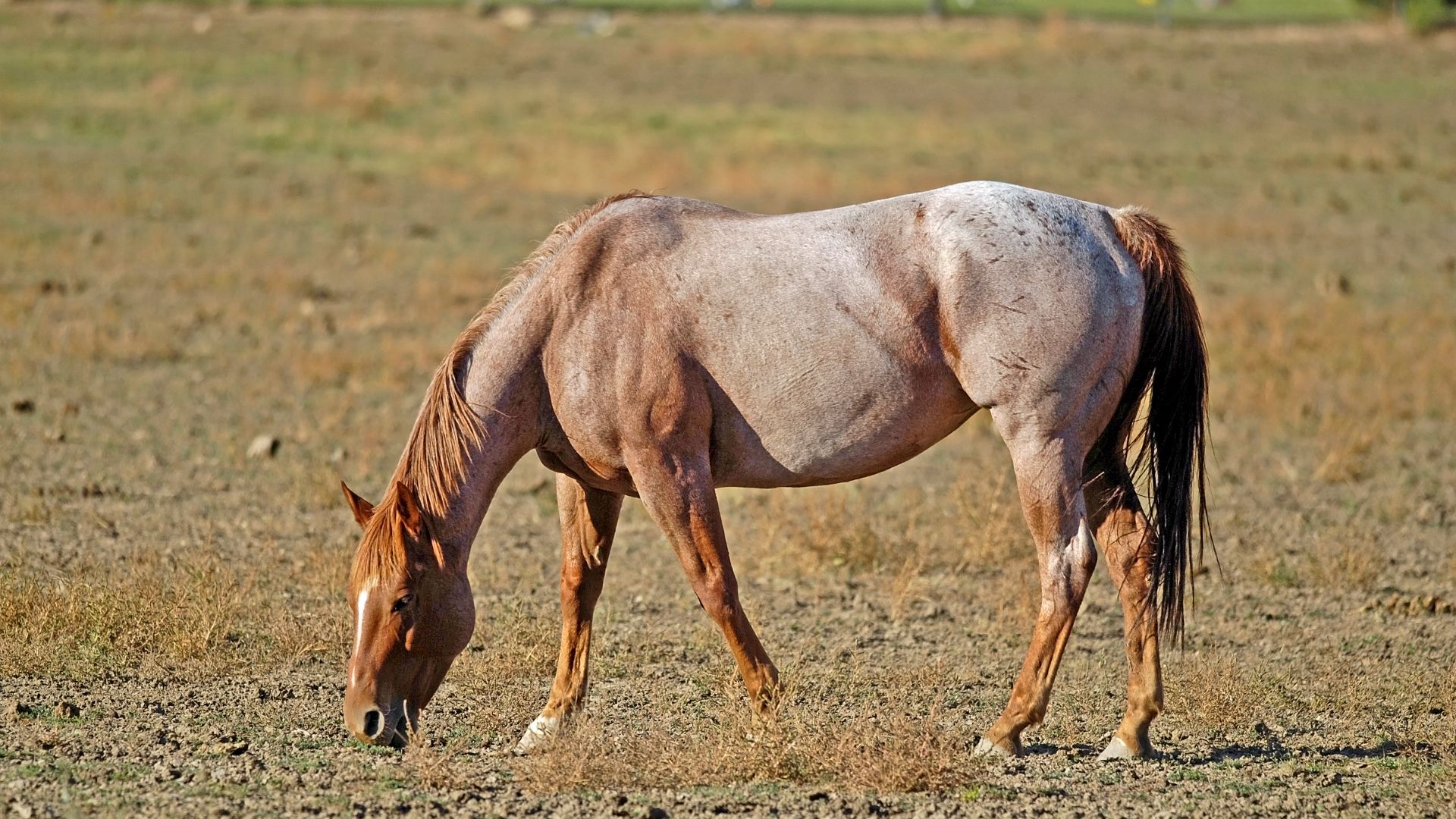
Sometimes called strawberry roan, this label describes a horse with a chestnut base coat featuring roaning.
Bay roan
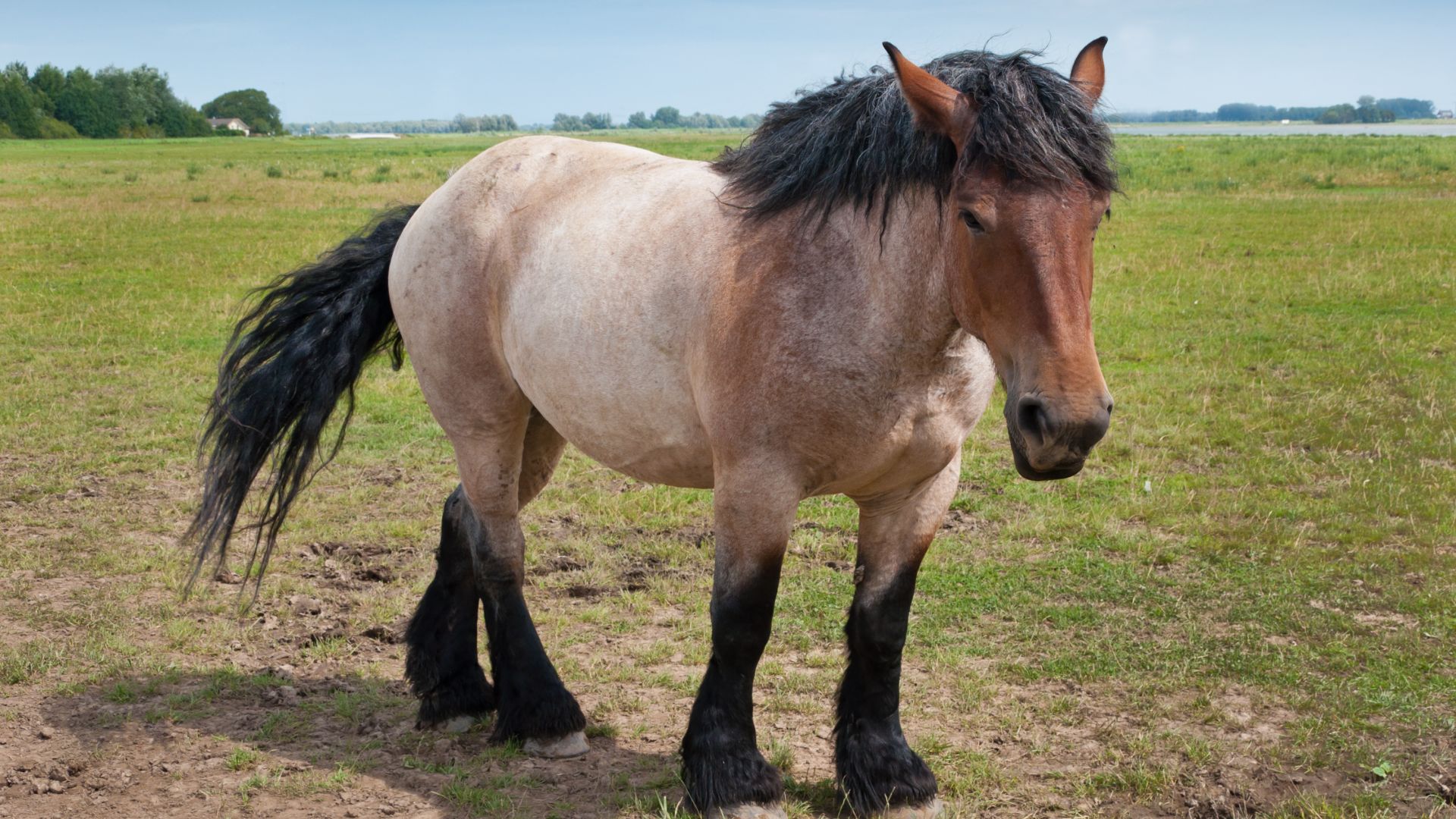
A bay base coat, including the characteristic black mane and tail and legs, with roaning throughout.
Blue roan
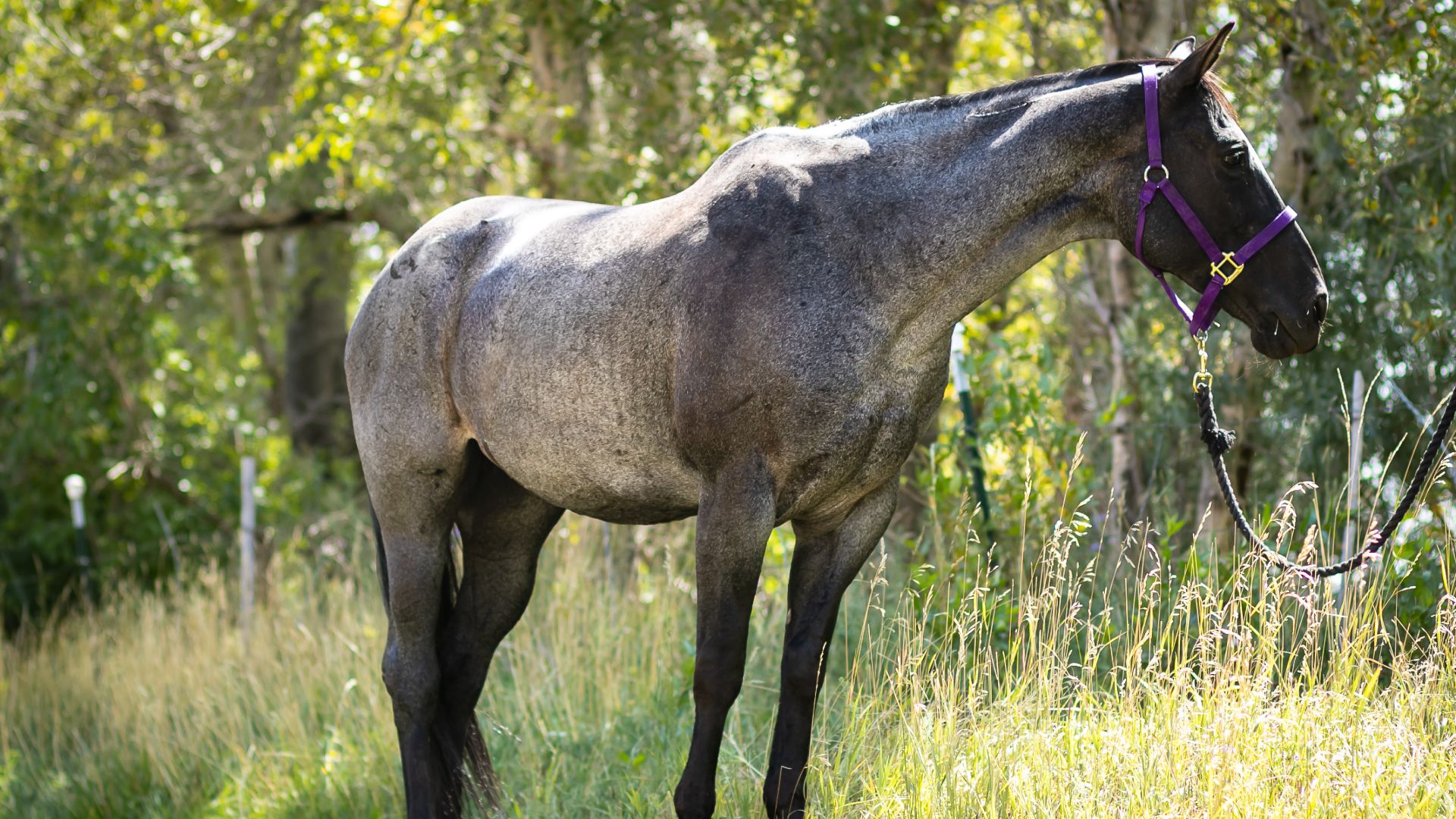
A black base coat color with white hairs dispersed throughout.

Bethany is an experienced news and features writer with an equestrian specialism, and has been writing for internationally recognised titles, such as Horse & Hound magazine where she is currently features assistant, since 2017.
Prior to her career in journalism, she studied BA English at the University of Nottingham, where she graduated with a first class degree.
As well as cultivating a vast and far-reaching understanding of equine training and management, her first-hand pet care experience also ranges from dogs and rabbits to chickens and sheep.
She’s also volunteered at greyhound rescue centres by walking their four-legged residents.
When she isn’t writing, she's kept busy by her two horses and cocker spaniel, Matilda, who’s a dab hand at dog agility and loves performing her favourite party trick – weaving between her human’s legs as she walks.
